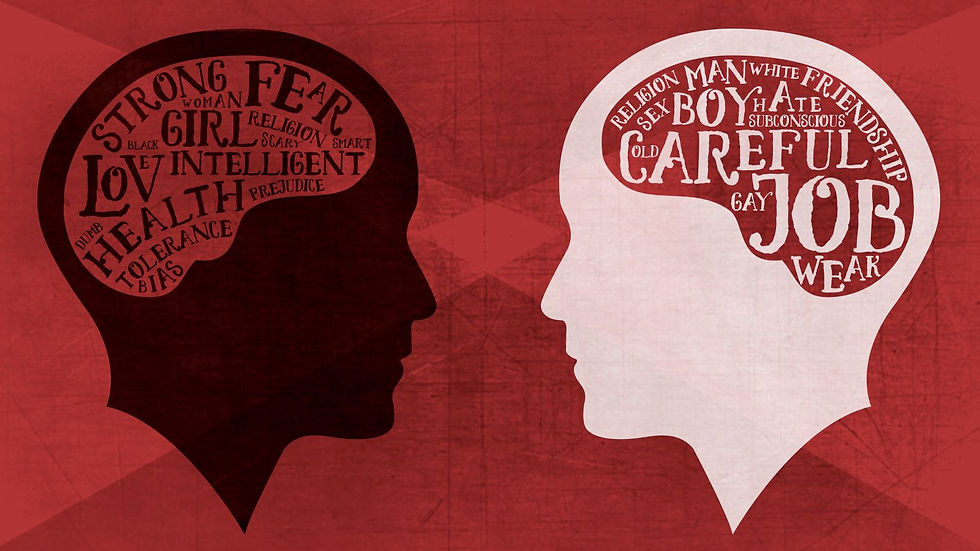Dealing with Bias
- WizzSense

- Jun 24, 2024
- 3 min read

Bias is a pervasive issue that affects every aspect of our lives, from our personal relationships to our professional decisions. It is an inclination or prejudice for or against something or someone, often in a way that is considered unfair or misleading. In today's increasingly diverse and interconnected world, it is crucial for everyone to be aware of bias and its potential impact on our thoughts, actions, and interactions with others.
Below one can find the most commonly met categories of bias:
1. Cognitive Biases: These are systematic errors in thinking that affect our judgment and decision-making. Examples include confirmation bias (seeking information that confirms our preexisting beliefs), anchoring bias (relying too heavily on the first piece of information encountered), and the halo effect (allowing one positive trait to influence our overall perception of a person or situation).
2. Social Biases: These biases stem from our interactions with others and our perceptions of different social groups. Examples include in-group bias (favoring members of our own group), stereotyping (generalizing characteristics of a group to all its members), and attribution bias (attributing the actions of others to their character while attributing our own actions to external factors).
3. Cultural Biases: These biases arise from the values, norms, and practices of our cultural background. They can influence our expectations, communication styles, and attitudes towards others who may have different cultural backgrounds.
4. Personal Biases: These are biases that are unique to an individual, often stemming from their experiences, upbringing, and personality. Examples include self-serving bias (taking credit for successes and blaming external factors for failures) and optimism bias (overestimating the likelihood of positive events and underestimating the likelihood of negative events).
And what can we do to identify and mitigate bias implications? Here's some basic ideas:
1. Awareness: The first step in dealing with bias is to become aware of its existence and its potential impact on our thoughts and actions. By recognizing our own biases, we can start to challenge and counteract them.
2. Perspective-taking: Making an effort to see situations from different perspectives can help us understand and empathize with others, reducing the influence of our biases.
3. Exposure to diversity: Interacting with people from diverse backgrounds and seeking out diverse sources of information can broaden our understanding and reduce the impact of biases.
4. Questioning assumptions: Regularly questioning our assumptions and the information we encounter can help us identify and challenge biases.
5. Structured decision-making: Using structured processes and objective criteria when making decisions can help minimize the influence of biases.
6. Continuous learning: Keeping an open mind and continuously learning about bias and its impact can help us develop strategies to mitigate its effects.
Further Reading:
1. "Thinking, Fast and Slow" by Daniel Kahneman
2. "Blindspot: Hidden Biases of Good People" by Mahzarin R. Banaji and Anthony G. Greenwald
3. "The Hidden Brain: How Our Unconscious Minds Elect Presidents, Control Markets, Wage Wars, and Save Our Lives" by Shankar Vedantam
4. "Biased: Uncovering the Hidden Prejudice That Shapes What We See, Think, and Do" by Jennifer L. Eberhardt
5. "The Leader's Guide to Unconscious Bias: How to Reframe Bias, Cultivate Connection, and Create High-Performing Teams" by Pamela Fuller, Mark Murphy, and Anne Chow
By understanding the nature of bias, its various forms, and strategies to mitigate its impact, we can work towards creating a more inclusive, fair, and unbiased world.



